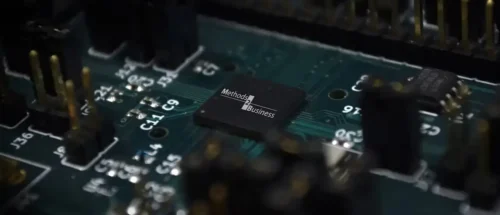The chip combines long-range Wi-Fi and on-device AI, helping devices work without internet, save power, protect data, and reduce need for cloud.

Methods2Business (M2B), a semiconductor company based in the Netherlands, has introduced the first Wi-Fi CERTIFIED HaLow chip with integrated Edge AI. The chip brings wireless connectivity and on-device processing together in one low-power design. It operates in the sub-1 GHz spectrum (IEEE 802.11ah), offering over 1 km range and better signal penetration through obstacles, with reduced power use compared to standard Wi-Fi.
The built-in AI allows local data processing on the chip. Devices can detect issues, predict failures, and respond to sensor input without sending data to the cloud. This setup lowers latency, reduces bandwidth use, and keeps devices running during network outages. It also helps manage data flow and supports data privacy.
The chip works in many environments and supports thousands of devices per access point. It fits use cases in factories, agriculture, logistics, healthcare, and infrastructure. Security features include WPA3 and AES encryption, in line with EU cybersecurity rules. IP-native networking allows connection with existing systems and software.
Some of the key features of the Wi-Fi CERTIFIED HaLow chip include:
- Connects to Wi-Fi over long distances (over 1 km)
- Uses less power than normal Wi-Fi
- Can process data directly on the chip
- Works even without internet connection
- Sends less data to the cloud
- Keeps data private and secure
- Can connect thousands of devices at once
- Fits into existing computer systems easily
- Works in factories, farms, hospitals, and transport
- Helps save energy and reduce data use
This design supports a move toward edge-based systems. By limiting cloud use and reducing data transfer, it helps lower energy use. The chip supports goals for energy savings, data control, and efficient digital systems. It offers a way to build IoT systems that process, connect, and act with less power and fewer dependencies.
For more information, click here.











